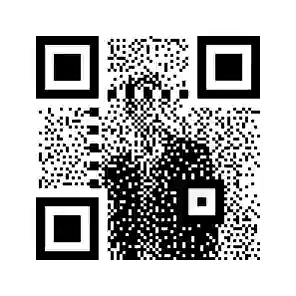How to use QR code to improve marketing engagement
QR codes, or Quick Response codes, are two-dimensional barcodes that can be scanned by smartphones to access information or take action. It has become increasingly popular in marketing, as it offers a number of benefits over traditional marketing methods.
QR codes have the ability to bridge the gap between the physical and digital worlds. It can be used to connect people to a variety of online content, such as websites, videos, and social media pages. Applying QR codes in your marketing can be a great way to promote your brand, drive traffic to your website, and generate leads.

Case study:
In April 2022, YouTuber – Zack Freedman – tweeted a GIF created by Repeated Failure that’s gone viral. The GIF contains an animated QR code with moving frames that you might recognize it is the dance sequence from Rick Astley’s famous Never Gonna Give You Up music video.
The QR code other than being an artistic graphics, the GIF actually works as a QR code.
Actually the technique to create animated QR code isn’t that complicated. You simply overlay the animation sequence on top of the QR code image while ensuring the code remains scannable throughout the animation. And then render the animation as a video file or GIF format.
Benefits of using QR codes in marketing:
- Increased engagement: QR codes can be used to provide consumers with quick and easy access to information, such as product details, videos, or coupons. This can help to increase engagement with your brand and drive conversions.
- Improved customer experience: QR codes can be used to streamline the customer experience, such as providing quick access to menus, product information, or customer support. This can help to improve customer satisfaction and loyalty.
- Enhanced data tracking: QR codes can be used to track how consumers are interacting with your marketing campaigns. This data can be used to measure the effectiveness of your campaigns and make adjustments as needed.
- Bridged offline and online marketing: QR codes can be used to bridge the gap between offline and online marketing. For example, you can use QR codes on print ads to direct consumers to your website or social media pages.
- Cost-effective solution: QR codes are a relatively inexpensive way to market your business. There are a number of free QR code generators available online, and you can create and print your own QR codes.
Here are some specific examples of how QR codes can be used in marketing:
- Product packaging: QR codes can be used on product packaging to provide consumers with more information about the product, such as ingredients, recipes, or nutritional information.
- Print ads: QR codes can be used on print ads to direct consumers to your website, landing page, or social media pages.
- Signage: QR codes can be used on signage to provide consumers with information about a product or service, such as pricing, availability, or directions.
- Coupons and promotions: QR codes can be used to deliver coupons and promotions to consumers. Consumers can scan the QR code to redeem the coupon or promotion.
- Contests and giveaways: QR codes can be used to enter contests and giveaways. Consumers can scan the QR code to enter their information.
QR Codes are trackable. Tracking QR codes allows you to measure the effectiveness of your QR code campaigns and gain valuable insights into user behavior. Here are two main methods for tracking QR codes:
Using dynamic QR codes:
Dynamic QR codes are generated with shortened URLs that contain tracking parameters, such as UTM parameters. When a user scans a dynamic QR code, these parameters are recorded, allowing you to track scan data in analytics tools.
Here’s how to track QR codes using dynamic QR codes:
- Generate a dynamic QR code: Use a QR code generator tool that supports dynamic QR codes. Create a shortened URL using a URL shortening service like Bitly or Rebrandly. Add UTM parameters to the shortened URL to track specific campaign data.
- Deploy the QR code: Distribute your dynamic QR code in print materials, online platforms, or physical locations.
- Set up analytics tracking: Integrate your analytics platform, such as Google Analytics, with your URL shortening service. Configure your analytics platform to track UTM parameters.
- Monitor scan data: Access your analytics dashboard to view QR code scan data. Analyze metrics like total scans, unique scans, scan locations, and device types.
Using QR code tracking platforms:
QR code tracking platforms provide specialized tools for managing and tracking QR code campaigns.
Here’s how to track QR codes using QR code tracking platforms:
- Choose a QR code tracking platform: Popular options include QRCode Monkey, QR Code Generator PRO, and Supercode.
- Create an account and generate QR codes: Sign up for an account on the chosen platform. Generate QR codes for your campaigns and assign them unique identifiers.
- Deploy the QR codes: Distribute your QR codes in various channels.
- Track QR code scans: Log in to your platform's dashboard to view scan data. Analyze metrics like total scans, unique scans, scan locations, and device types.
- Utilize advanced features: Explore the platform's advanced features, such as campaign segmentation, data export, and reporting tools.